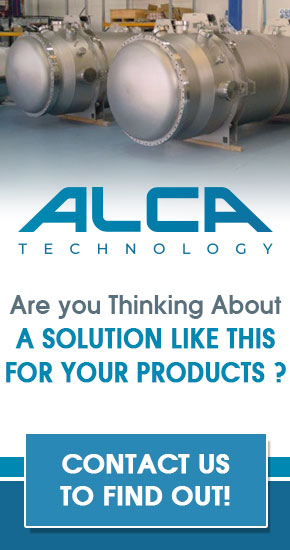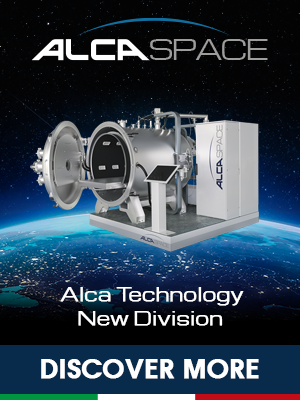Technical Gases in Vacuum Deposition Processes

When an industrial ultra high vacuum (UHV) deposition plant reaches its base pressure, generally of the order of 10-6 mbar (i.e. one billionth of the atmospheric pressure), an enormous quantity of particles is still present in the working environment: more than 26 billion per cubic centimeter. What is this residue made of? Generally from the same gaseous species that are normally present in the air: nitrogen, oxygen, water vapor and traces of other substances. The exact composition of the mixture present naturally depends on the conditions of the environment in which the system is located, on the type and degree of cleanliness of the substrates to be treated, on the level of contamination of the internal surfaces of the chamber, on the type and efficiency of the pumping system and a number of other factors that are often difficult to control. If necessary, it is always possible to measure the composition using an instrument called RGA (Residual Gas Analyzer), which is nothing more than a mass spectrometry.
Many industrial vacuum deposition processes require an environment with a controlled composition of the environment: a certain amount of high purity technical gases is then continuously fed into the chambers, using controlled flow valves called MFC (Mass Flow Controllers). In this way, by establishing a balance between the incoming and outgoing flow, generated by the pumping system, it is possible to establish an equilibrium condition that corresponds to what is defined as the "working pressure" of the system. The value of this pressure varies depending on the process considered: in the technique called magnetron sputtering (MS), for example, it is of the order of 10-2 mbar, therefore ten thousand times greater than the base pressure value mentioned above. We can therefore say that the residual gases present will be strongly diluted by the flow of gas introduced into the chamber, also called working gas: their effect on the process will therefore generally be negligible.
In addition to this, there are many other applications of technical gases in the vacuum technique: for example, leak detection, venting in a controlled atmosphere, use as reactive gases in PVD and CVD processes, etc.
But what are the most used gases? The complete list would be very long, so we will stick to the most common ones.
The first category that must necessarily be mentioned is that of the so-called noble gases: they are those that do not easily give chemical reactions, they are found in the last column (group) of the periodic table. They are used for various reasons: the first is that they are, in fact, inert gases, which allow to manage the pressure in the chamber without giving reactions of any kind with the substrates. Therefore, they are often used as diluents, in the event that another chemical species must be introduced into the work environment, in small quantities. Another reason why noble gases are used derives from the fact that some of them have a particularly low first ionization potential, i.e. they are able to easily lose an electron becoming ions. They are, therefore, particularly appreciated in the case in which it is necessary to generate a plasma, as in the case of the magnetron sputtering technique mentioned above.
The most used noble gas in the vacuum sector is certainly argon (chemical symbol Ar, the name derives from the Greek word for "lazy"), an element that is very unreactive, easily ionizable and of low cost. Ar is easily obtained by distillation of liquid air, making up almost 1% by volume of the air we breathe. Furthermore, it is commercially available in any location in the world as it is used in many processes, ranging from metallurgy to welding, diving technique, surgery, etc.
Another highly used noble gas is helium (chemical symbol He, from the Greek term for "sun"), which is also the lightest existing gas and the second lightest element, after hydrogen. It is a very abundant element in the universe, but it is almost absent in the earth's atmosphere: only 5 parts per million. It is therefore obtained mainly by separating it from natural gas, in which it is present as a consequence of its origin: the natural radioactive decay of elements such as thorium and uranium, which occurs spontaneously in the subsoil. A curiosity: helium, once used and released into the atmosphere, easily escapes into space, thus constituting a non-renewable resource. In the vacuum technique, helium is used as a diluent gas, and also as a tracer for the search for leaks, since it has the characteristic of spreading easily and quickly even through the thinnest cracks.
The list continues with nitrogen (chemical symbol N, from the Greek term for "lifeless"), a gas that constitutes 78% of the air we breathe, in which N2 is present in its stable diatomic form. It is obtained by distillation of liquid air, it is inexpensive and relatively inert. It is therefore an "all-rounder" gas, which can be used in large volumes as a diluent in some deposition processes (eg. ALD), but also as a reactive gas (for example in the reactive sputtering of titanium nitride) and for venting of a chamber reducing the contamination of the internal surfaces, being sold in practically anhydrous form.
The next gas is oxygen (chemical symbol O), another diatomic gas present in abundant quantities in the air, of which it constitutes more than 20% by volume as O2. This gas is often used, usually in small concentrations, diluted by an inert gas and in the form of plasma, to clean substrates, as it is able to completely eliminate any organic contamination present, oxidizing them to water and carbon dioxide. In addition, it is used as a reactive gas in PVD and CVD processes.
The last gas belonging to the elite of those used in ultra-high vacuum applications is methane (chemical formula CH4). This compound is often used as a carbon source in the production of DLC coatings (Diamond Like Coatings), which have assumed considerable industrial importance, especially in the world of tools. Speaking of methane, it is worth remembering that it is a compound that can form explosive mixtures if mixed with air, so it is necessary that the plant in which it is used is equipped with an Atex certified pumping system.


